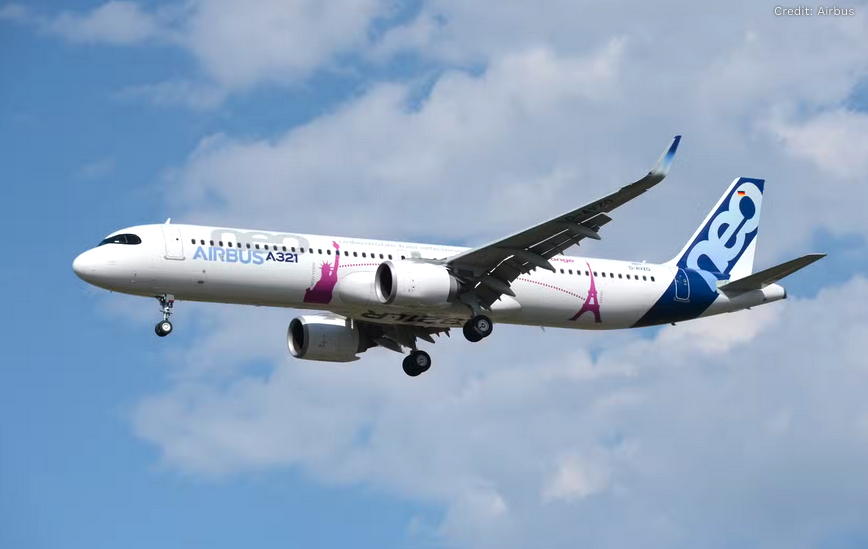Airbus Delivery Pace Sparks Doubts Over 2025 Target

Airbus delivered 78 aircraft in October 2025, bringing total deliveries for the year to 585, as the manufacturer continues its push to meet its ambitious goal of around 820 commercial aircraft by year-end. While the monthly figure marked an improvement over September’s 73 deliveries, analysts say Airbus will need a sharp acceleration in the final two months to stay on track.
According to the company’s latest data, October’s handovers included 522 single-aisle jets from the A220 and A320 families and 63 widebody aircraft, comprising 23 A330s and 40 A350s. The deliveries were made to 36 customers worldwide, underscoring continued demand across both narrowbody and long-haul markets despite persistent supply chain and engine availability challenges.
Airbus also reported a strong rebound in orders, securing 112 new aircraft in October compared to just 10 in September. Total gross orders for 2025 now stand at 722 aircraft, including 521 narrowbodies and 201 widebodies. After accounting for 97 cancellations, net orders total 625.
Despite the delivery momentum and improving order book, Airbus faces mounting pressure to ramp up output amid component shortages. The company is maintaining its full-year financial outlook, targeting an adjusted EBIT of around €7 billion and free cash flow before customer financing of roughly €4.5 billion.
Supply Chain Challenges Persist
Airbus has faced ongoing supply chain issues, particularly delays in engine deliveries from Pratt & Whitney and CFM International. According to Reuters, more than 60 completed Airbus jets—often referred to as “gliders”—are currently awaiting engines before final delivery. These bottlenecks slowed Airbus’s early-year delivery rate to just 45 aircraft per month in the first quarter, improving to 56 in the second quarter as suppliers ramped up output.
Despite these challenges, Airbus CEO Guillaume Faury remains optimistic about meeting the company’s 2025 delivery target. “All our attention will be on engine deliveries from both CFM and Pratt & Whitney, but they’re telling us they’ll deliver what we need,” Faury told CNBC. “We remain positive for the back end of the year.”
Boeing Trails Airbus as 2025 Jet Deliveries Reach 493
Boeing reported 53 aircraft deliveries in October, bringing its total for 2025 to 493 jets—its strongest pace since before the pandemic. However, the U.S. manufacturer continues to trail European rival Airbus, which delivered 78 aircraft in October and has now handed over 585 planes this year, maintaining its lead in the global delivery race.
Boeing also secured 15 new orders during the month, reflecting steady demand for its 737 MAX and 787 Dreamliner models. “We delivered 39 737 MAX aircraft in October, including nine to Southwest Airlines and five to Ryanair,” the company said. Boeing also delivered one 737 Next Generation jet for conversion into a P-8 maritime patrol aircraft for the U.S. Navy, along with 13 widebody aircraft—seven 787 Dreamliners, two 777 freighters, and four 767s.
Industry Outlook
Industry observers note that the next eight weeks will be critical in determining whether Airbus can meet its ambitious year-end delivery target and maintain investor confidence heading into 2026. The company must deliver more than 230 aircraft before year’s end to reach its goal of 820—an achievable but aggressive pace that depends heavily on engine supplier performance and supply chain stability. Analysts say successfully hitting that milestone would reinforce Airbus’s reputation for operational reliability and cement its lead in the commercial aircraft market for a fifth consecutive year.
While Airbus continues to hold the upper hand in both deliveries and profitability, Boeing’s recovery trajectory appears increasingly steady. The U.S. manufacturer is rebuilding production capacity after years of setbacks, implementing stricter quality-control systems, and ramping up output on its best-selling 737 Max and 787 Dreamliner programs. Industry analysts note that Boeing’s investments in its South Carolina and Washington state facilities, combined with rising demand for fuel-efficient widebodies, could set the stage for a more competitive 2026.
Both manufacturers now enter the final stretch of 2025 with record order books, signaling robust long-term demand for new aircraft as airlines modernize fleets and prepare for sustained passenger growth. The competition for the world’s top spot in commercial aviation—long dominated by Airbus and Boeing—remains intense, with production efficiency, quality control, and supply chain resilience emerging as the key differentiators in the year ahead.
Related News: https://airguide.info/?s=airbus, https://airguide.info/category/air-travel-business/airline-finance/
Sources: AirGuide Business airguide.info, bing.com, airbus.com, boeing.com, reuters.com
